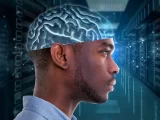
Combined Intelligence in Technology
August 9, 2022The CSIRO is researching collaborative processes, workflows, and Integrated Intelligence Systems. The researchers are focused on how to help humans build trust and communication with these machines. In a study of 1,075 organizations across twelve industries, researchers H. James Wilson and Paul R. Daugherty found that companies improved performance when employees worked closely with AI. These improved performance levels translate into higher cost savings and increased revenue.
The Combined Intelligence in Star Trek was an organic computer brain system that operated on the Kree civilization. It resembled a greenish mass and was connected via organic tendrils to machines installed in the ceiling. These machines were advanced computers that controlled various devices, including weapons systems. They were linked to slave collars and were capable of generating pain. These machines were installed at Kree bases and acted as governors.
General AI is a type of AI that performs cognitive tasks more efficiently. Researchers are working to develop systems that can think and feel like humans. Currently, these systems are under research, but they are expected to soon surpass human intelligence. Super AI, or artificial intelligence with enhanced cognitive capabilities, has the potential to surpass human intelligence and is the ultimate goal of all AI researchers. It has the potential to free human workers from risky or boring tasks and to improve the productivity of all sectors of the world.
While AI systems are able to process vast amounts of data, they can also be opaque, requiring human experts to explain their decisions. The need for these “explainers” is especially important in industries with a high degree of regulatory and consumer-facing regulation. In many cases, the results of AI systems are incorrect or inappropriate. They can also create new risks and inefficiencies. This is why human review is crucial. If AI systems are not checked by human experts, they may produce faulty results or miss opportunities.
A new study by KPMG published a foresight report on AI in 2018. The analysts described a scenario where each device has its own AI that links to others and performs tasks intelligently. Ultimately, this swarm intelligence would control value creation. This technology would transform several industries. For example, fully autonomous vehicles and drones will be a reality soon. By combining these two technologies, organisations can make the most of these emerging technologies.
Data science and analytics enable companies to predict future trends, predict their customers’ behavior and create new products. Data science and analytics help companies predict trends and improve customer experience. These cutting-edge technologies are increasingly being used to make business decisions and automate operations. As more data is generated, businesses can use this technology to improve customer service and form marketing around the flow of new information. In the process, AI can even improve supply chains and streamline customer service.
The first applications of AI in healthcare domains include diagnosis of disease. This application of AI has been developed for many years. Stanford University’s MYCIN is an example of an AI system for diagnosing blood-borne bacterial infections. Early rule-based systems showed promise, but failed to find widespread adoption in clinical settings. Furthermore, they did not integrate well with workflows and medical records systems. For example, some medical records systems are not yet compatible with AI.




